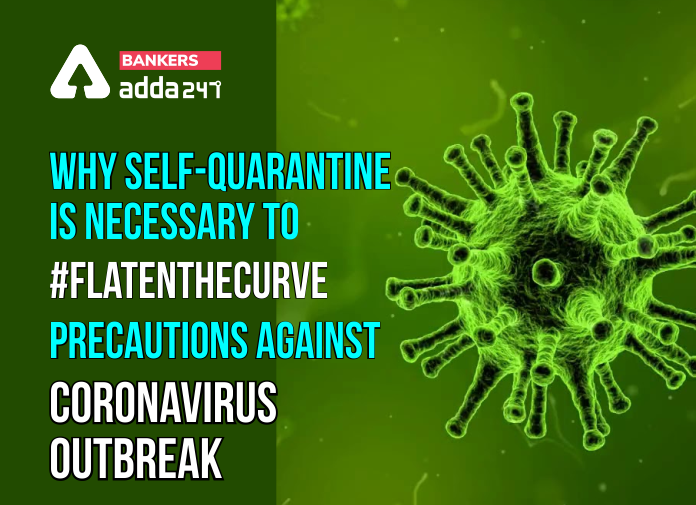Table of Contents
The Novel Coronavirus pandemic is wreaking havoc across the globe, and has, infected 472,076 (as on 26 March, 12 PM) people in over 100 countries with the disease called COVID-19. This disease has caused 21,307 deaths worldwide and in India the confirmed number of COVID-19 cases are 649. What’s worse is that any and all efforts to completely contain this disease have gone in vain, thus Prime Minister Narendra Modi has announced the lockdown of the nation till 14 April in order to prevent people from going out and contracting the disease, as social distancing is the only measure we can rely on to stay safe.
Practice with,
In just a few short weeks, the number of confirmed COVID-19 cases around the world have doubled up, from 75,000 cases in the third week of February 2020, to over 150,000 by mid-March. While some countries, like India, are still in the early stages of the disease, Italy and China have been hit the hardest, with the number of confirmed cases reaching 20,000 in a matter of just 4 to 5 days.
And it is because of the rapid growth of the disease that hospitals and medical centres around the world are filling up in greater frequencies. Moreover, the increase in the number of confirmed cases has also led to the shortage in the availability of basic medical supplies and equipment, such as respirator masks, hand sanitisers, and more.
The trend of #FlattenTheCurve:
According to epidemiology, the medical branch which deals with the incidence, spread and possible control of disease, the phrase of “Flattening The Curve” is described as the idea of slowing the spreading of a virus which would lead to a lesser number of people needing to seek treatment at any given time. In regards to this, the hashtag #FlattenTheCurve has also been becoming popular around the world. It goes on to explain the reason why many countries around the world are implementing the guidelines of “Social Distancing.”
Also Read,
- Don’t Let Coronavirus Get The Better Of Your Career Opportunity
- PM Modi Locks Down India for 21 Day Due to Coronavirus Outbreak
The “Curve” here refers to the number of people that could contract COVID-19 over a specific period of time. It is important here to note that the number is just for theoretical use. This curve will take different shapes, which depends upon the infection rate of the virus. The faster this curve rises, the faster will the healthcare system of a particular place get overloaded beyond its actual capacity to treat people. And if that goes on, hospitals may quickly run out of the basic supplies required to respond to the pandemic.
“Flattening” the curve, on the other hand, is something more feasible. A flatter curve assumes that the same number of people will get infected. Only this time, it will happen over a longer period of time. This means that the infection rate will be slower, thereby leading to a healthcare system that is less stressed and has a lesser burden at a given point of time.
So how do we flatten the curve?
As of now, there is no specific medication, or vaccination available to treat COVID-19. Moreover, since the testing for this virus is limited, the only way we can actually flatten the curve is by taking collective action. From the usual precautions to social distancing and isolation, ever little step could prove to be helpful for us. The government of many different countries have recommended that people wash and sanitise their hands frequently, self-isolate when they suspect they might be sick or when they are actually sick and even start avoiding other people whenever and wherever possible, starting immediately.
As a result, schools, colleges and other educational institutions have been closed until further notice and the India is under a lockdown of 21 days starting from 25 March 2020. Moreover, many business organisations all around the world have advised their employees to work from home, starting right away.
How self-quarantine is becoming a major player for flattening the curve:
Self-quarantine is one step ahead from self-monitoring. This is because the person who is at the risk of getting infected, has a higher chance of exposure. This means that if you are around someone who tested positive for the virus, you should ideally be self-quarantining. Quarantining means staying at home and away from other people, for a period of 14 days. Self-quarantine, on the other hand, requires you to stay in your rooms, away from people, in addition to not going outside. Furthermore, it is advisable that people who are self-quarantining, should try using a separate toilet too.
In this regard, anyone who has visited the Coronavirus affected areas, such as China, Northern Italy, or the United Kingdom, are required to self-quarantine. Additionally, experts recommend people to stay at home if they have been to an area where the pandemic has spread and are experiencing any symptoms.
What self-quarantine will do is slower down the pace of the spread of Coronavirus. When people are less mobile and interact with each other less, the virus gets fewer opportunities to spread. When it stops spreading due to no physical interaction, the disease will eventually affect a lesser number of people. Moreover, self-quarantine will ensure whether a person is medically fit and without any symptoms or not.
Also Read,
- Important Topics to Practice for SBI Clerk Mains 2020 Exam- Section-wise Details
- SBI Clerk Mains Likely To Be Postponed
Additionally, when you are self-quarantining, you are helping the healthcare systems and hospitals from becoming overloaded. This will give them the chance to treat people who are actually infected from the virus.
Other precautions against the coronavirus outbreak:
Some other precautions that you can take during this outbreak are:
- Wash your hands often with soap and water, especially after you have been out in a public place, or after coughing or sneezing
- Use a hand sanitizer with at least 70 percent alcohol
- Avoid touching your nose, mouth, eyes and face with unwashed hands
- Avoid coming in close contact with people who are unwell
- Stay at a distance from other people
- Do not go out if you are sick, except to get medical care
- Wear a facemask if you are sick, or if and when you are around other people, especially when they are sick
- Clean and disinfect touched surfaces on a daily basis, such as mobile phones, toilers, keyboards, sinks, doorknobs, tables, etc
If there is anything that is becoming a hindrance in your preparation then let us know by giving your response and we will try our level best to come up with a solution to make sure that you are defeating the coronavirus this exam season with your preparation.
Register and share us with your feedback
Prepare With,



 GA Capsule for SBI Clerk Mains 2025, Dow...
GA Capsule for SBI Clerk Mains 2025, Dow...
 The Hindu Review October 2022: Download ...
The Hindu Review October 2022: Download ...
 Rajasthan Gramin Bank Formed after Merge...
Rajasthan Gramin Bank Formed after Merge...


